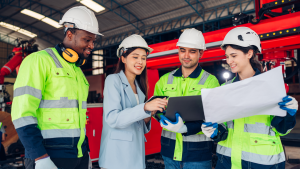The difference between version and revision in ISO Standards is a commonly discussed topic among management system professionals and enthusiasts. This is justified due to the vast range of existing standards, some of which have been around for more than 35 years.
Besides being an interesting curiosity, professionals need to be aware of these terms because each version (or revision) adds new best practices and important points to the standards. Additionally, to keep your certification up to date, you must always comply with the requirements of the current version.
Therefore, in today’s content, we will explain the difference between version and revision in ISO Standards. By the end of this article, you will definitively learn what each term means and never confuse them again! Let’s go?
VERSION of ISO Standards
When we talk about documented information, it is necessary to control the version of the document. Generally, we use a sequential number, such as “Version 01” or “Version 02.” Every time we make a revision to the document, we change the version number. This is very common and extremely vital both for day-to-day operations and audits.
With ISO standards, it is the same, but ISO controls versions with the publication year. Thus, simply put, the version is the year of the official publication date. Therefore, the valid standard will always be the one with the most recent publication year. In the case of ISO 9001, for example, the current version is the one published in 2015.
Just reiterating, this means that to get certified under ISO 9001, companies need to comply with the requirements and guidelines of the 2015 version (the most recent).
It is also worth noting that there may be a difference in the publication year between international standards and their translations or adaptations for different languages. This occurs due to the translation and approval process of these standards in each country, which takes some time. Thus, the “national version” may be published sometime after the original version, which “alters” the year of the version locally, but it still maintains the requirements and guidelines of the original version.
REVISION of ISO Standards
However, we know that standards, like any documented information, need to undergo updates to become more modern and adhere to market changes. For this, standards go through an extensive update process, involving thousands of professionals, public consultation, and a lot of work. This process is called a “Revision.”
Thus, while the “version” is the publication year, the “revision” is the process of updating a standard. This process generates a new version that replaces the previous one with improvements, additions, and exclusions.
ISO 9001, for example, as already mentioned, is currently in its 2015 version. However, this standard is undergoing revision. When this process is completed, we will have a new version of ISO 9001. We have content about the revision on the blog, but it is expected that the new version will be published in 2026, so we will then have ISO 9001:2026! When the new standard is published, companies will have a period to implement the changes and new requirements, this period is called “transition.”
Final Considerations on Version and Revision in ISO Standards
To conclude, it is worth mentioning that a new “version” usually includes major changes, such as content restructuring, the addition of new requirements, or the exclusion of obsolete parts of the previous standard. A good example was the adaptation of ISO 9001 to the notorious Annex SL.
Therefore, a new version indicates a significant point in the development of the standard, where users need to adopt the new edition to comply with the standard.
A “revision,” on the other hand, is a step in the life cycle of a standard, indicating that the standard has gone (or is going) through a process of evaluation and update. Additionally, not all revisions result in a new version; some only issue amendments or supplements to the existing version.
The revision helps keep the standard up-to-date and relevant according to the global economic context, facilitating continuous adaptation by users and ensuring that the standards are realistic and bring results for adopting companies.
Another interesting detail worth mentioning is that all ISO management system (MS) standards must be updated according to Annex SL, the high-level structure of ISO. Thus, MS standards that are not yet in this format will have to be adapted to this management standard in their next revision.
As a certifying body, we are constantly updating companies about new versions and revision processes, and we actively participate in some revision processes. After all, all this corresponds to improvements and more results for our companies and all interested parties.











